I have a problem with Champaign, IL. I’ve never been, but it regularly sticks in my craw. We have a client who, for better or worse, expects regular keyword rank reports. According to our rank reports this store is struggling, but the magnitude is out of line with their other stores. I’ve long suspected that our report isn’t telling the whole story. Until recently I haven’t had a tool that gives me the granularity I need to understand what’s happening on the ground.
With Local Falcon we can now see rank in specific locations. Our other tools are centered at the city centroid, or the zip code, or wherever. They’re a single point in a larger matrix. Wherever that point is, our store is not ranking well — right in that spot. We are missing key information.
When we look at the broader matrix with Local Falcon we can uncover where the major problems are. As we can see here there is a pretty clear line to the south and east of our store where rank plummets. Why is that? I suspect greater competition in those areas.
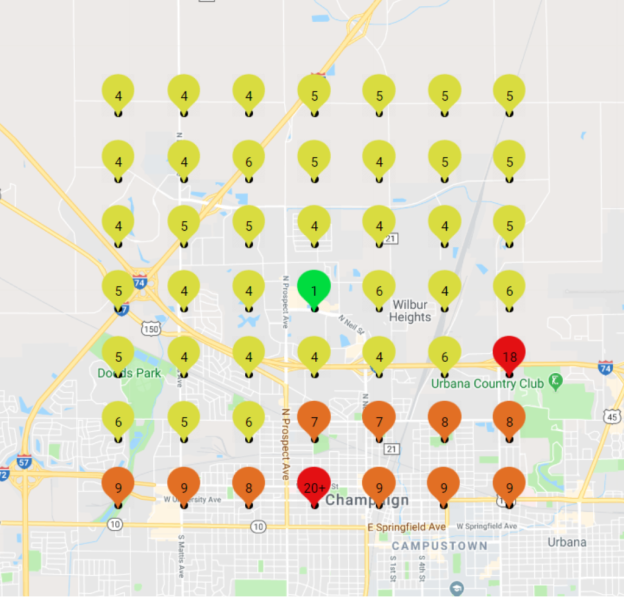
So let’s look at competition. In addition to the proximity rank matrix above, the tool lets us the other results in the serp, e.g. competitors. There are two clusters of competitors south and east, roughly aligned with the proximity rank matrix. These more or less mirror what we seen in the rank matrix. But again, we have other stores in similar markets with similar competitors and we don’t see this type of problem. I don’t think competition is the real driver.
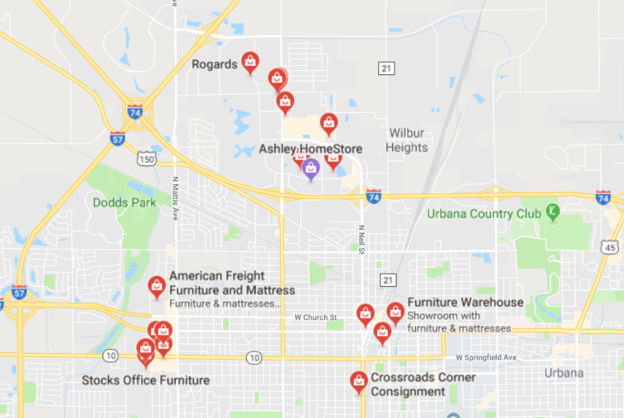
As we dig we find that there is more to the story. If the problem is not competition, maybe it’s the city. We are clearly within the Champaign city limits. It’s generally accepted that Google hasn’t really cared about the centroid in quite a while anyway. City doesn’t look like our culprit.
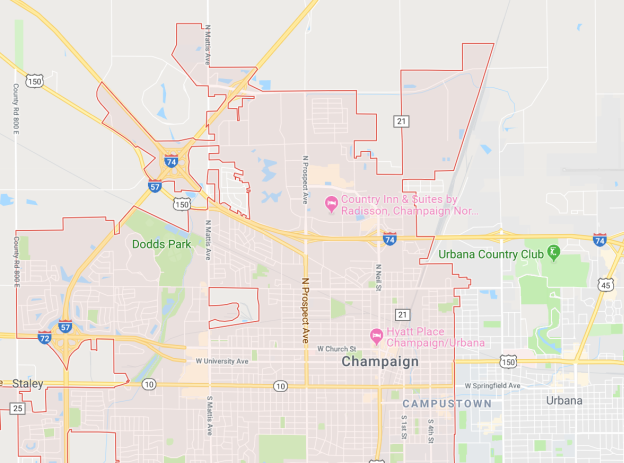
There is also the proximity to Urbana to consider (the area is often called “Champaign-Urbana”). Presumably, this impacts our position to the southeast. Different city, different zip, closer competitors = we’re less relevant. Makes sense for the east side, but not the Champaign side.
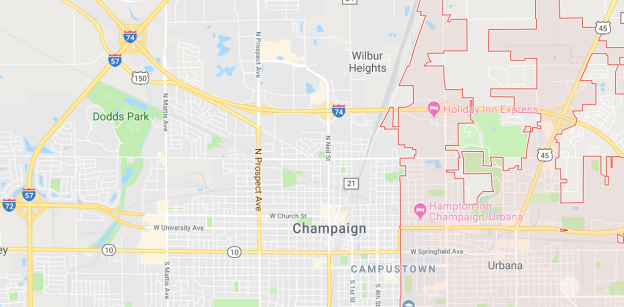
This next part gets interesting. Our address is in Champaign and the zip is 68112. However, most of Champaign is in a different zip code. We’re actually in a big zone that surrounds Champaign proper. Google says proximity is more important than factors like zip code, but the rank gradient in the proximity matrix says otherwise. It follows the zip code boundary quite closely.
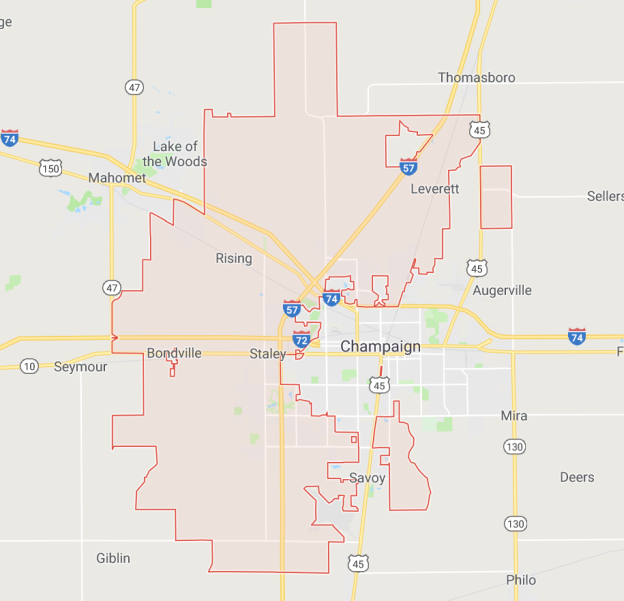
Out of 100+ stores this is one of 3 or 4 problem children. We’re in the city and we’re highly relevant, but we’re in a different zip. If zip really trumps proximity in Google local rank, at least in this case, that’s a pretty interesting finding.
Going back to where I started, our client expects regular rank reports. To say, “you rank 14 for your primary money keyword” is not very satisfying. What’s more, depending on where they search (which zip?), they may rank fairly well. This undermines their trust in the work we do for them. As I’ve suspected, the rank report that we provide is misleading. It’s not wrong, but there is a larger story. The rank proximity matrix we have with Local Falcon gives us a tool to explain that what’s really happening with their local rank performance.
Armed with this information, there are a few things we can do. One is help our client understand that rank is weird and a single number isn’t gospel. Now that we have identified where the problem is, our task is to grow our relevancy there. We need to figure out the factors that will trump zip code in this specific area. We’ll look at content on the store page of the main website, leverage reviews with references within our target area, and seed Q&A on GMB with targeted geo terms. We might, for example, re-work our “delivery area” description to highlight the primary zip for Champaign, neighborhoods, and try to bring in Urbana.
Was this post helpful? Share it @SERPsquatch.
